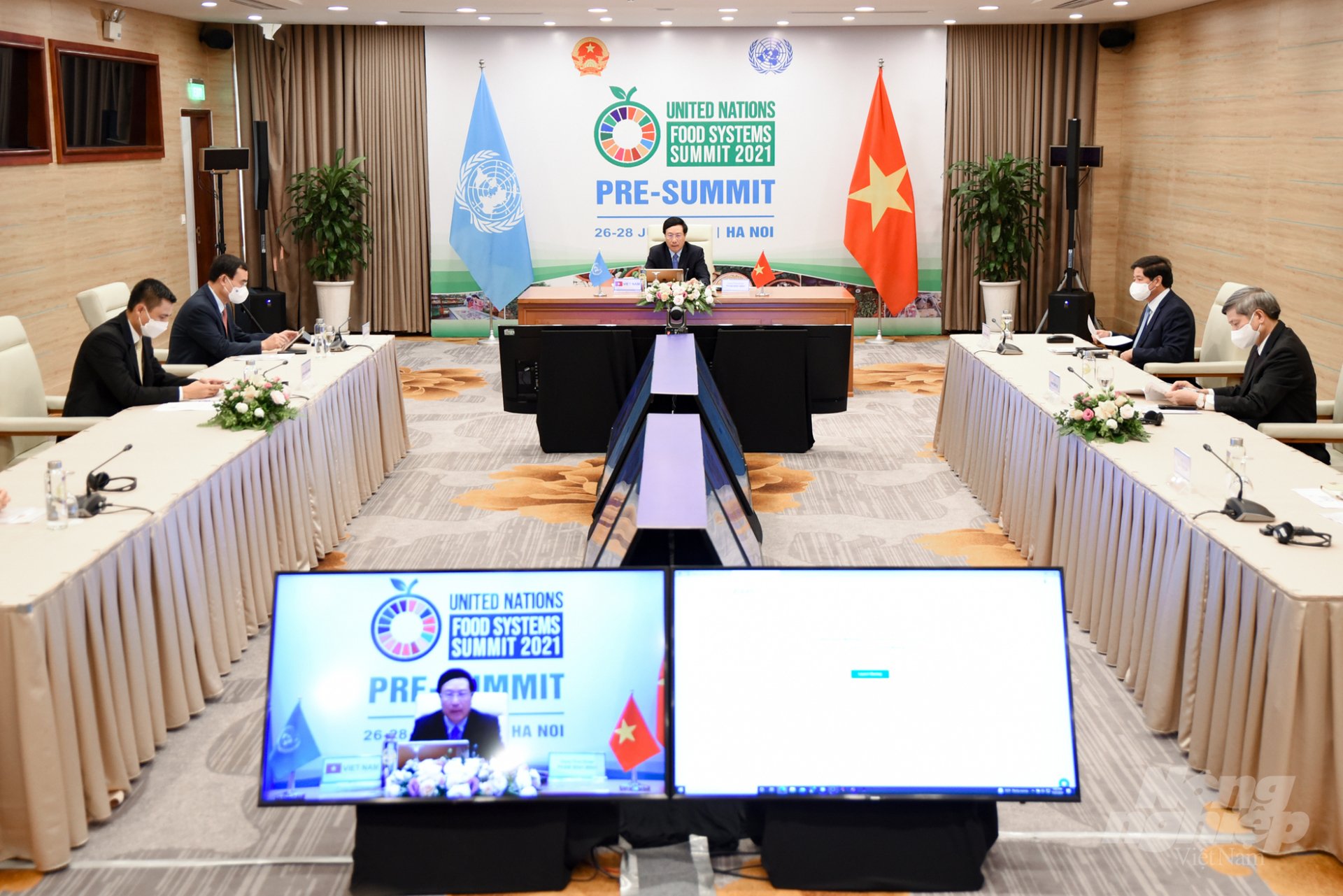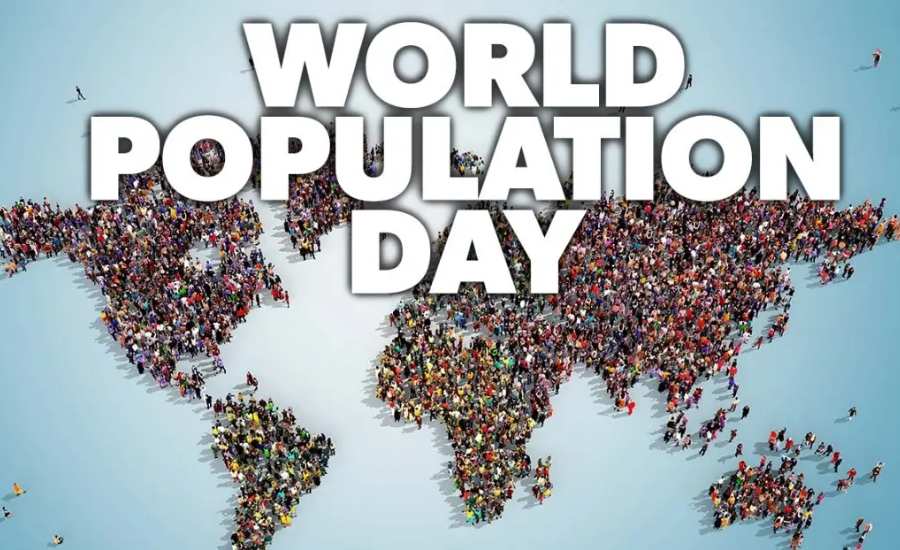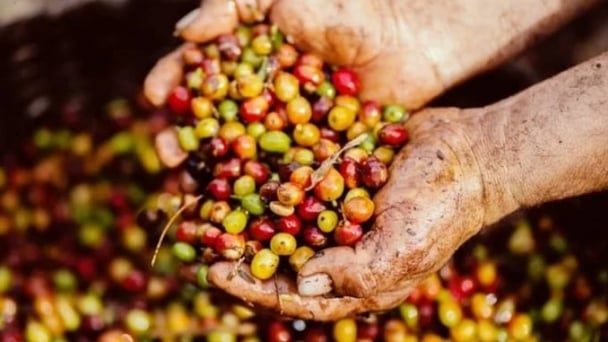June 18, 2025 | 10:06 GMT +7
June 18, 2025 | 10:06 GMT +7
Hotline: 0913.378.918
June 18, 2025 | 10:06 GMT +7
Hotline: 0913.378.918

Vietnam actively participates in the global food supply chain. Photo: VAN.
According to the forecast of the United Nations, the world population is expected to increase from 7.9 billion in 2022 to 8.6 billion in 2032. This corresponds to an average annual growth rate of 0.8%, slowing down from the 1.1% experienced over the past decade. Population growth is concentrated in low-income countries, especially Sub-Saharan Africa, where the population is expected to experience the fastest annual growth rate of 2.4% over the next decade.
The population of the People's Republic of China decreased for the first time in 2022 and is expected to drop further to 1.41 billion inhabitants in 2032. India is expected to overtake China in 2024 to become the world's most populous country, potentially reaching a population of 1.52 billion in 2032. As for other areas such as European countries, Japan and South Korea, the populations are expected to decline in the next few years.

The world population is expected to increase from 7.9 billion in 2022 to 8.6 billion in 2032.
The International Monetary Fund (IMF) makes an estimate of national GDP and per capita income over the next decade. After falling from 5.8% in 2021 to 3% in 2022, global GDP growth is expected to continue to decrease in 2023 and stabilize at an average of 2.6% over the next decade.
In the period 2023 - 2032, the Asia - Pacific region will experience the strongest GDP growth, especially in India, China and Southeast Asia. In the Sub-Saharan Africa region, the Near East and North Africa, GDP growth is projected to be higher than the global average, while that of Latin America and the Caribbean is expected to be lower.
The COVID-19 pandemic has reduced income inequality within countries. The percentage loss in income of the poorest is estimated to be twice that of the richest, thereby delaying access to high-value food products among the poorest populations.
After the recovery in 2021, global per capita income growth is 2%/year in 2022 and is expected to weaken to 1%/year in 2023. In the next ten years, the annual average growth rate is 1.7%/year in real terms. It is expected that per capita income will increase sharply in Asia, especially in Vietnam (5.6%/year), India (5%/year), China (4.7%/year), Philippines (4.5%/year), Indonesia (4%/year) and Thailand (3%/year).
Regarding Sub-Saharan Africa, per capita income is projected to grow slowly at 1.1%/year over the next decade. Strong population growth limits real per capita income growth in Sub-Saharan Africa.\
Ethiopia is expected to have a strong growth rate of 4%/year because of a very low starting point and stable economic growth rate. In Latin America and the Caribbean, per capita income growth is projected at 1.6% per year with smaller regional variations. In the Near East and North Africa region, per capita income growth is projected at 1.7% per year, with the Near East region and Egypt taking the lead.
Globally, economic growth will be primarily driven by per capita income growth. This is especially true in the case of OECD countries and China. In contrast, the high population growth rates in Sub-Saharan Africa mean that the relatively high rates of economic growth in the region (3.6%/year) correspond to only modest growth per capita (1.1%/year). The same applies to the Near East and North Africa.
Economic growth is modest in Europe at 1.5%, where the population is expected to decline over the next ten years, translating to per capita income growth of 1.7%/year.
Assumptions on exchange rates are based on the IMF's World Economic Outlook (October 2022). Some countries' currencies are expected to appreciate in real terms against the US dollar. This is the case for Brazil, Mexico, Chile, Argentina and Paraguay. The report also forecasts currency gains in countries such as Nigeria, Ethiopia and Ukraine, and the trend is evident in South Africa, Japan, South Korea, Norway, Australia, China and the European Union.
Regarding the inflation forecast from the IMF’s World Economic Outlook (October 2022), despite high inflation rates in all countries in 2022, it is forecast to slow down in 2023 and the next ten years through tighter monetary policies.
In OECD countries, the inflation rate is 13% in 2022, expected to decrease to 4.4%/year over the next decade. Annual inflation rate is 2%/year for the USA, 2%/year for Canada and 2.1%/year for countries using the euro.
Among emerging economies, consumer price inflation is expected to remain high at 10.3% per year in Turkey and 9.1% per year in Argentina, despite a sharp decline over the past decade. Inflation will ease in India, from 4.8%/year to 3.8%/year and in Brazil, from 5.9%/year to 3.1%/year.
In contrast, China's consumer price inflation rate of 2%/year remains as in the past decade. Inflation is forecast to remain high in Sub-Saharan Africa, Ethiopia (12.6%/year), Nigeria (9.5%/year) and Ghana (6.9%/year). High inflation is also forecast in Egypt (6.5%/year) and Pakistan (6.5%/year).
The global picture of population growth, GDP growth and per capita income growth, as well as exchange rates and inflation in each country have a strong impact on trade and agricultural markets, affecting the people's ability to access food, especially the poor group in countries with weak economies.
Translated by Samuel Pham
![Turning wind and rain into action: [8] Real-time salinity detection and early warning technology](https://t.ex-cdn.com/nongnghiepmoitruong.vn/608w/files/news/2025/06/17/z6704423696987_15fd32ffc26d590d204d520c9dac6786-nongnghiep-151127.jpg)
(VAN) Thanks to the integration of modern hydrological-hydraulic models, remote sensing technologies, and artificial intelligence, the accuracy of hydrological forecasting has significantly improved.
![Turning wind and rain into action: [7] Early disaster warnings help marine farmers minimize losses](https://t.ex-cdn.com/nongnghiepmoitruong.vn/608w/files/news/2025/06/17/z6704423696987_15fd32ffc26d590d204d520c9dac6786-nongnghiep-142942.jpg)
(VAN) In recent years, thanks to early disaster warnings and forecasting, marine farmers in Khanh Hoa province have been able to reduce risks and losses, thereby improving production efficiency.
![Turning wind and rain into action: [6] ‘Four on-the-spot’ disaster management software](https://t.ex-cdn.com/nongnghiepmoitruong.vn/608w/files/news/2025/06/17/e5a48259d6a262fc3bb3-nongnghiep-183800.jpg)
(VAN) By simply activating the scenario on the disaster management software, the relevant authorities immediately know how many households need to be evacuated, where to evacuate them to, and by what means of transportation…
![Turning wind and rain into action: [5] Hue applies modern technology in disaster forecasting](https://t.ex-cdn.com/nongnghiepmoitruong.vn/608w/files/news/2025/06/17/z6704423696987_15fd32ffc26d590d204d520c9dac6786-nongnghiep-093938.jpg)
(VAN) In Hue city, modern technology has recently been applied in meteorological and hydrological forecasting and warning, helping to reduce the damage caused by natural disasters.

(VAN) A cutting-edge farming technique being implemented on an experimental ranch in Arizona's Sonoran Desert has already saved a billion gallons of water over five years, according to Civil Eats.

(VAN) Poultry and pig production and the environment can be boosted through enhanced water technology, according to new research.

(VAN) Coffee prices on June 16, 2025 are unchanged. In Vietnam, local trading prices are holding steady, ranging around VND 112,000 – VND 112,500/kg.